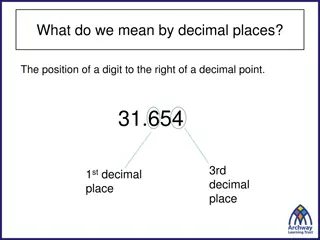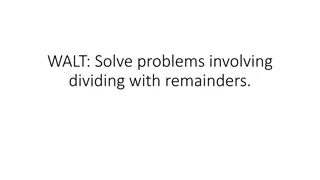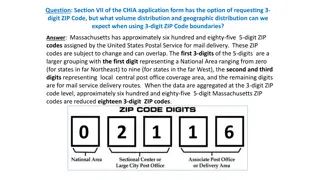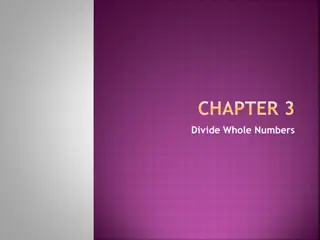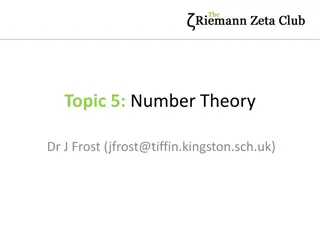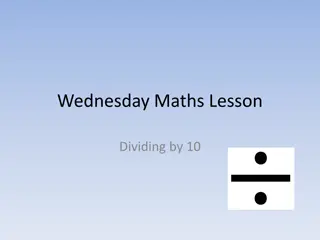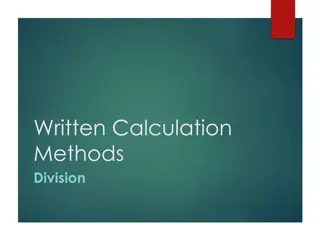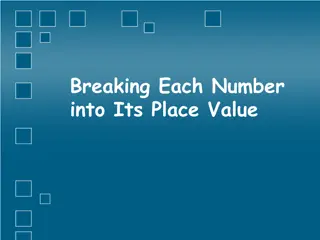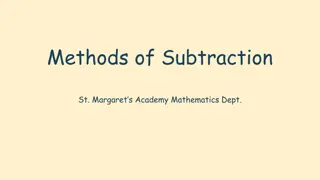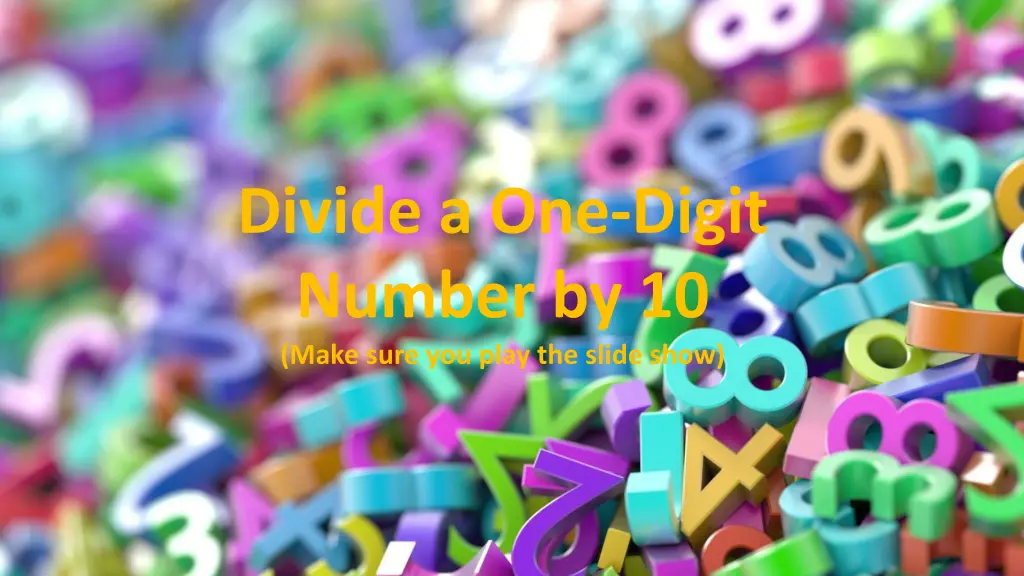
Mathematics Lesson on Dividing by 10 with Grid Illustrations
Enhance your understanding of dividing single-digit numbers by 10 through interactive grid exercises and visual representations with counters. Review the concept through a step-by-step approach and grasp the key principles with engaging examples and explanations.
Download Presentation

Please find below an Image/Link to download the presentation.
The content on the website is provided AS IS for your information and personal use only. It may not be sold, licensed, or shared on other websites without obtaining consent from the author. If you encounter any issues during the download, it is possible that the publisher has removed the file from their server.
You are allowed to download the files provided on this website for personal or commercial use, subject to the condition that they are used lawfully. All files are the property of their respective owners.
The content on the website is provided AS IS for your information and personal use only. It may not be sold, licensed, or shared on other websites without obtaining consent from the author.
E N D
Presentation Transcript
Divide a One-Digit Number by 10 (Make sure you play the slide show)
Draw a grid like this on your whiteboard/chalkboard/piece of scrap paper: 10ths 100ths 1s 10s
Were going to do a bit of revision first... (The questions ask you to draw counters but you could actually use real counters or coins if you ve got them)
On the grid, draw counters to represent 2.1. Click to reveal the answer. 10s 10ths 100ths 1s 2 1s in the 1s column 1 10th in the 10ths column 1 2
Draw counters to show the number 1.3 Click to reveal the answer 10s 10ths 100ths 1s 1 1 in the 1s column 3 10ths in the 10ths column 1 3
Last one! Draw counters to show the number 22.4 Click to reveal the answer. 10s 10ths 100ths 1s 4 10ths 2 1s 2 10s 2 2 4
Now were going to revise dividing by 10.
We did this with whole numbers in the Autumn term so cast your minds back
If I told you to work out 200 10 you would get 20. This is because you know that if your number ends in 0, you can take one zero away to divide it by 10. Let s look at why that works
Lets put the number 200 into this grid 100s 10s 1s 10ths 100ths 2 0 0
Now when I divide it by 10, Im not actually taking the zero away. All the digits in the number move one space to the right so the zero on the end gets pushed to the other side of the decimal point. Like this 100s 10s 1s 10ths 100ths 2 0 0 And as you can see, the answer is 20
So what happens if my number does not end with a zero? Let s find out
This time, were going to put the number 2 in the grid. 10s 1s 10ths 100ths 2
Now were going to divide it by 10 by moving the digit one space to the right 10s 1s 10ths 100ths 2 0 Can you spot the mistake? That s right! You can never have an empty ones column, so we have to fill it up with a zero! So the answer is 0.2 Let s have another go
Were going to do the same thing again but with the number 3. 10s 1s 10ths 100ths 3 Try to do it on your own whiteboard first before you check the answer on the next slide.
Now were going to divide it by 10 by moving the digit one space to the right 10s 1s 10ths 100ths 3 0 Can you spot the mistake? That s right! You can never have an empty ones column, so we have to fill it up with a zero! So the answer is 0.3 Let s have another go
Now give these questions a go. Use your whiteboard to work them out if you need to and then write the answers in your maths book. Once you ve done all of them, click to reveal the answers. 0.9 5) 9 10 = 1) 4 10 = 0.4 0.7 6) 7 10 = 2) 5 10 = 0.5 3) 1 10 = 0.1 7) 8 10 = 0.8 0.6 4) 6 10 =




